systems in Russia and the USA Aims: Talk

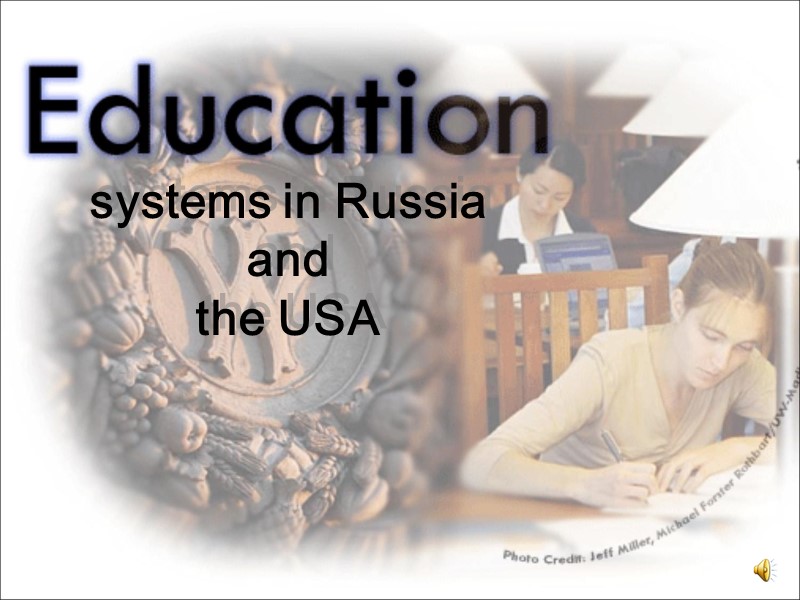
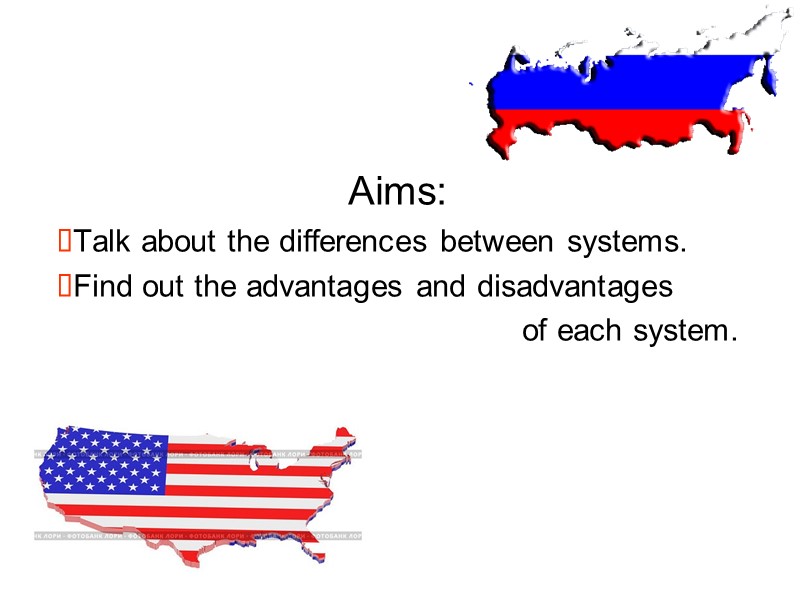
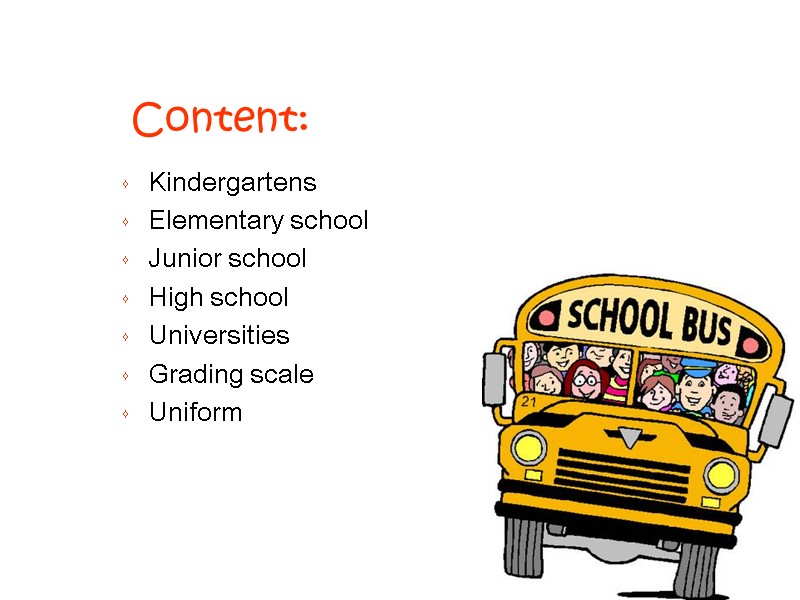
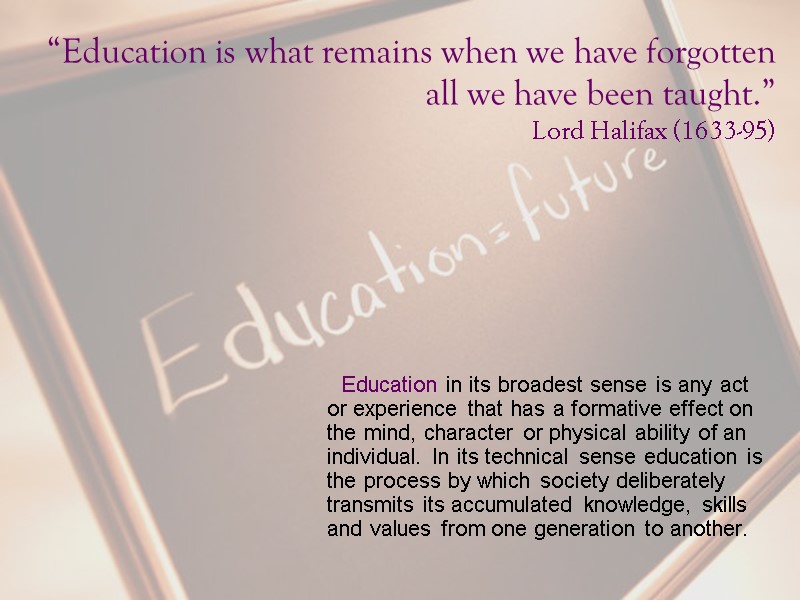
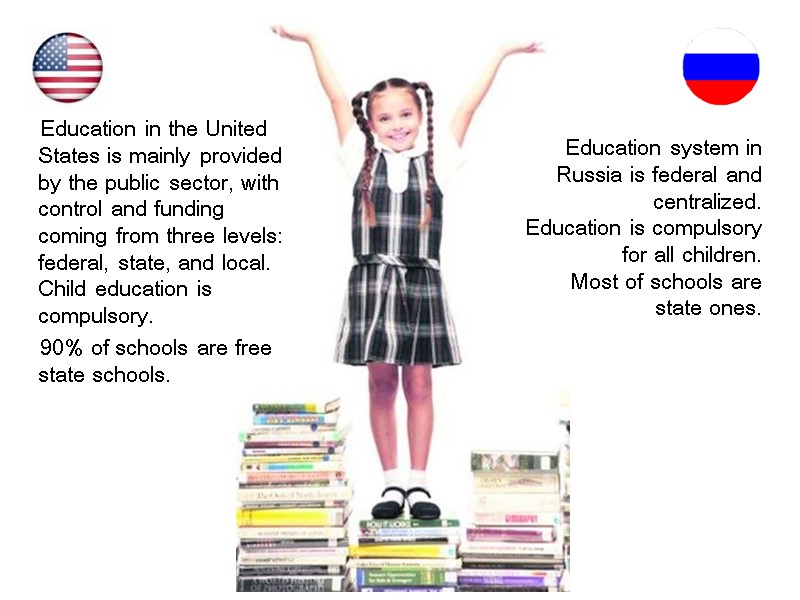
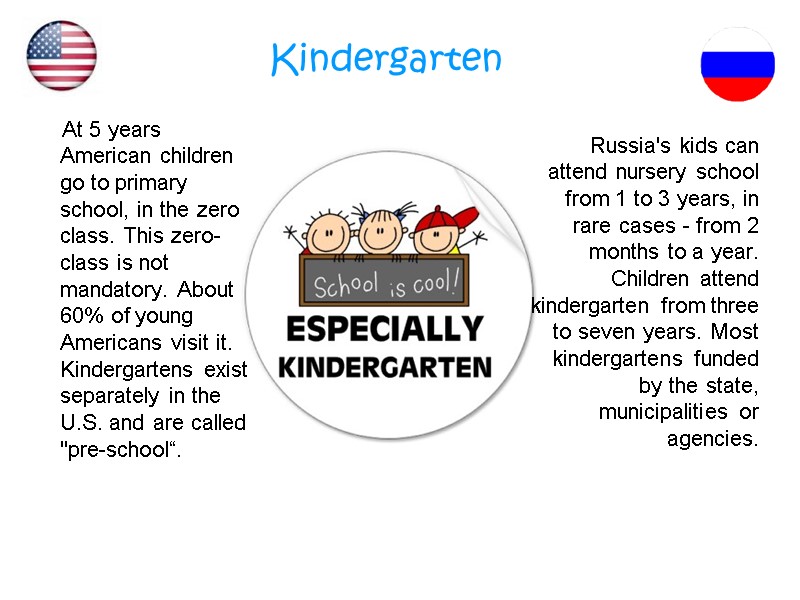
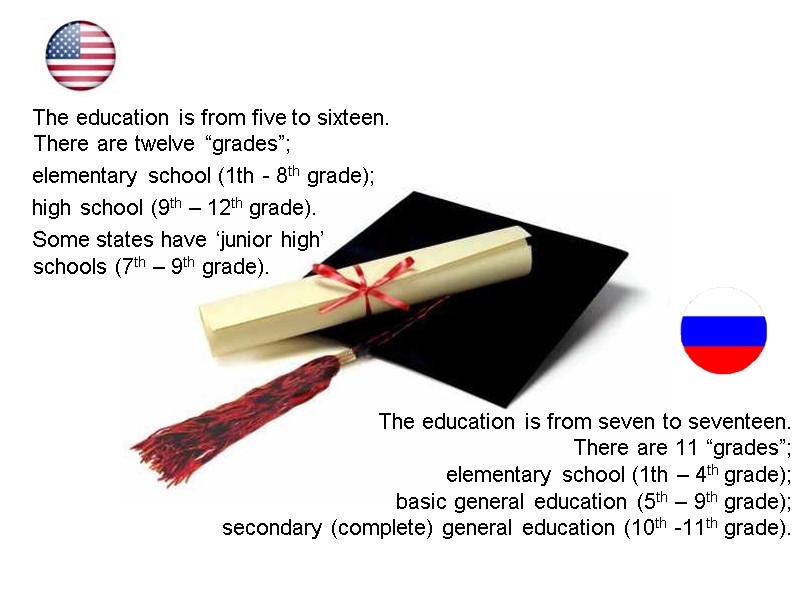
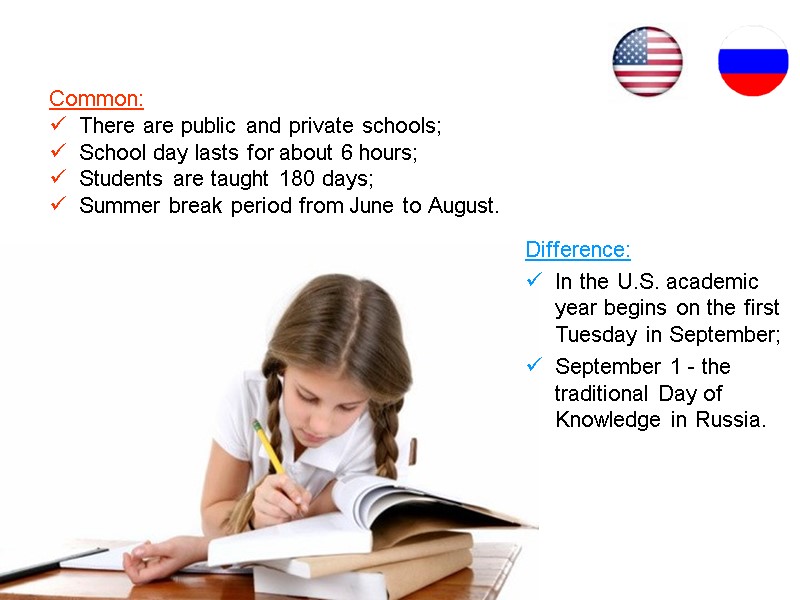
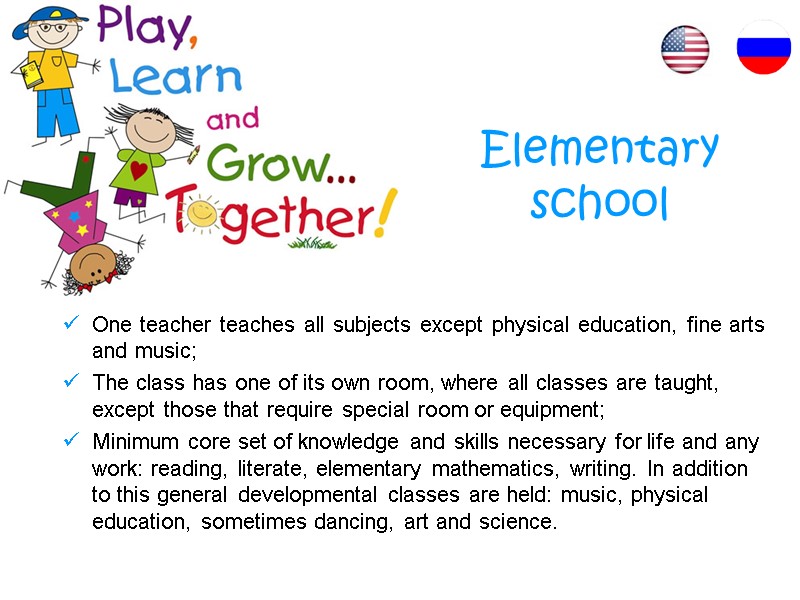
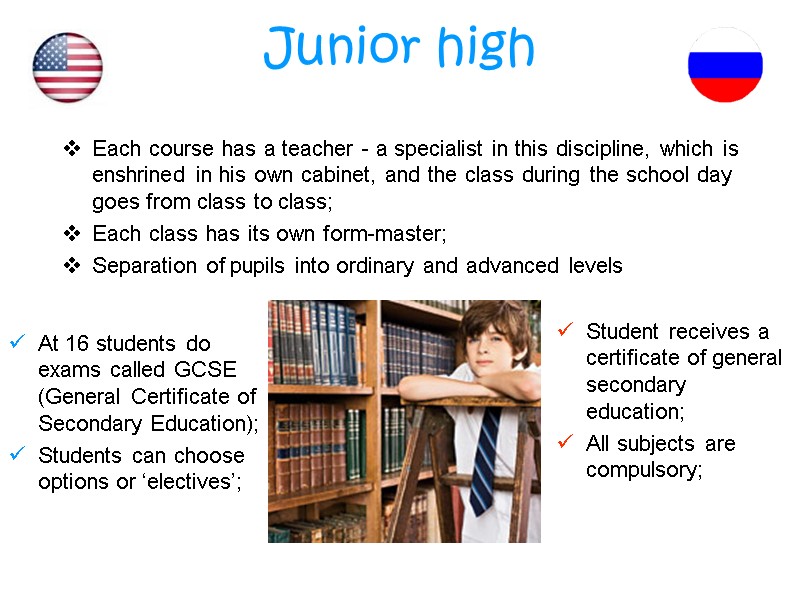
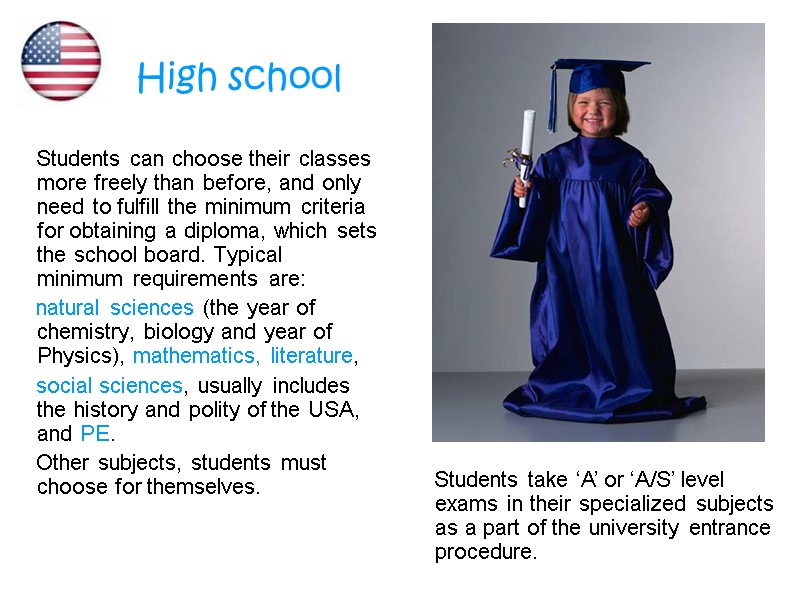

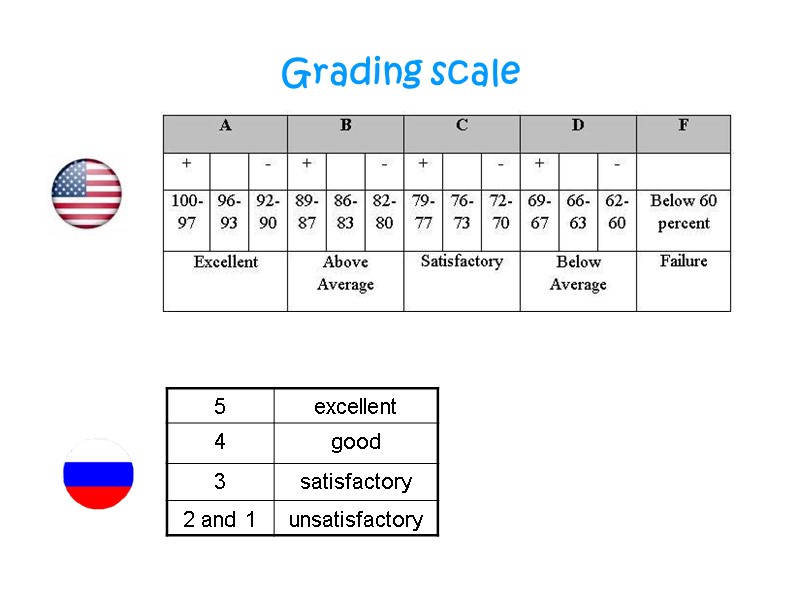
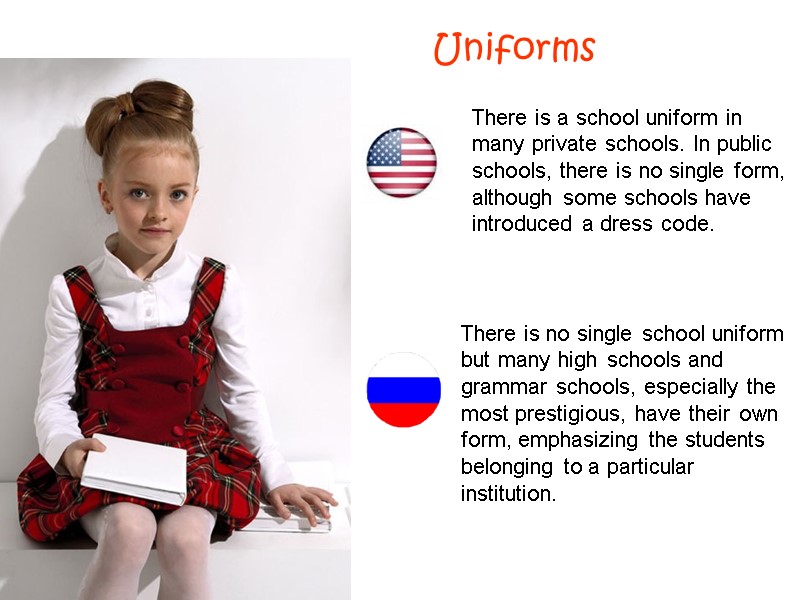
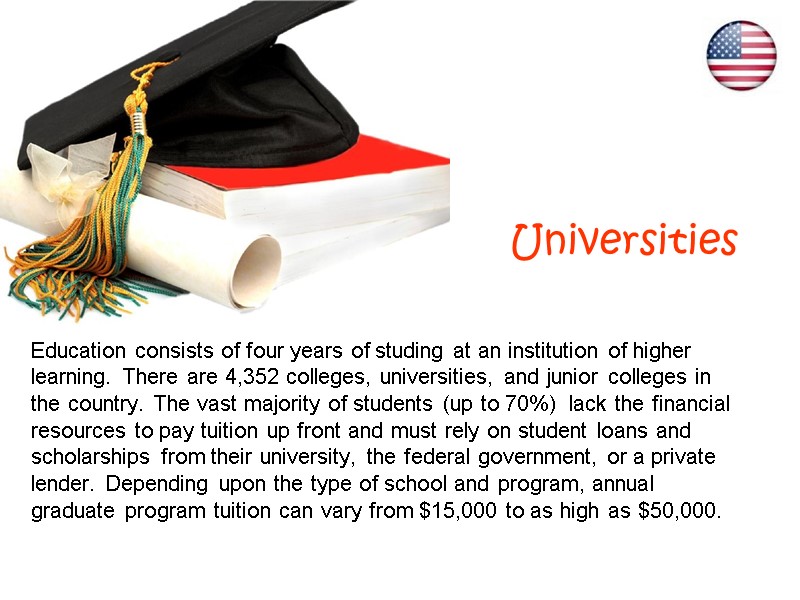
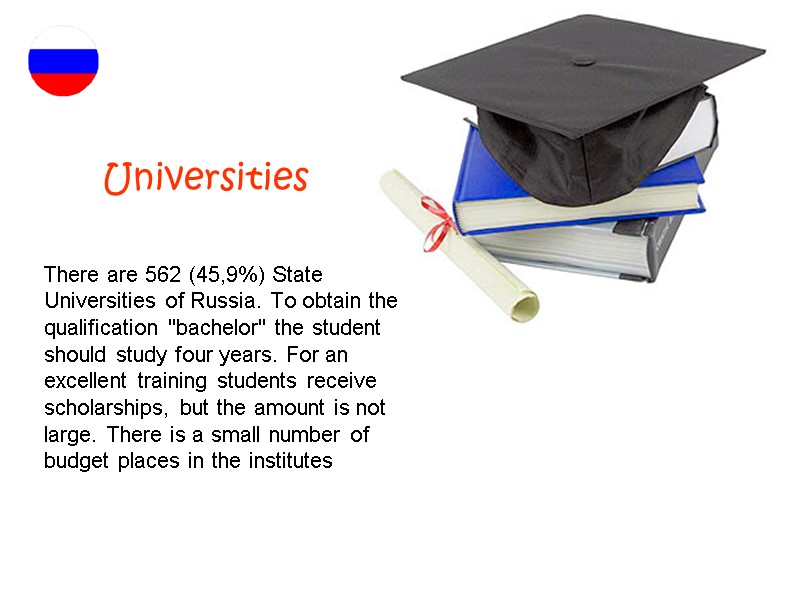

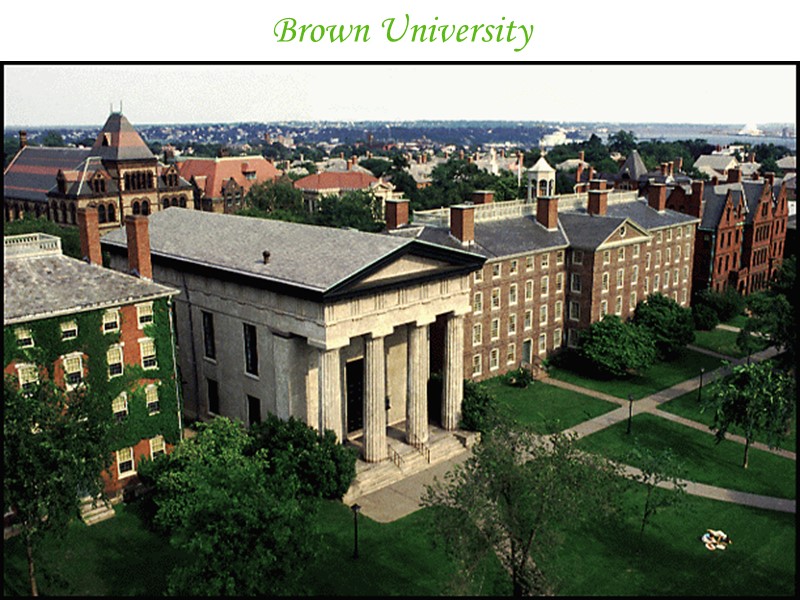
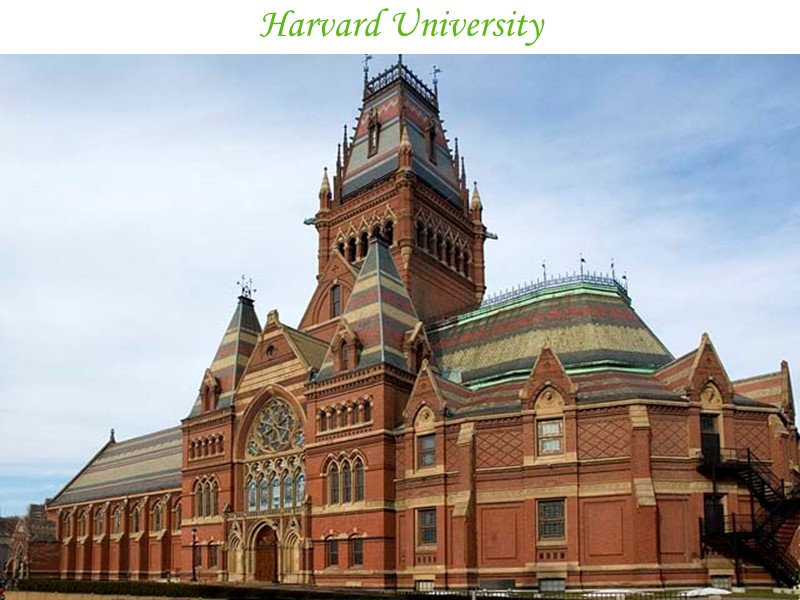
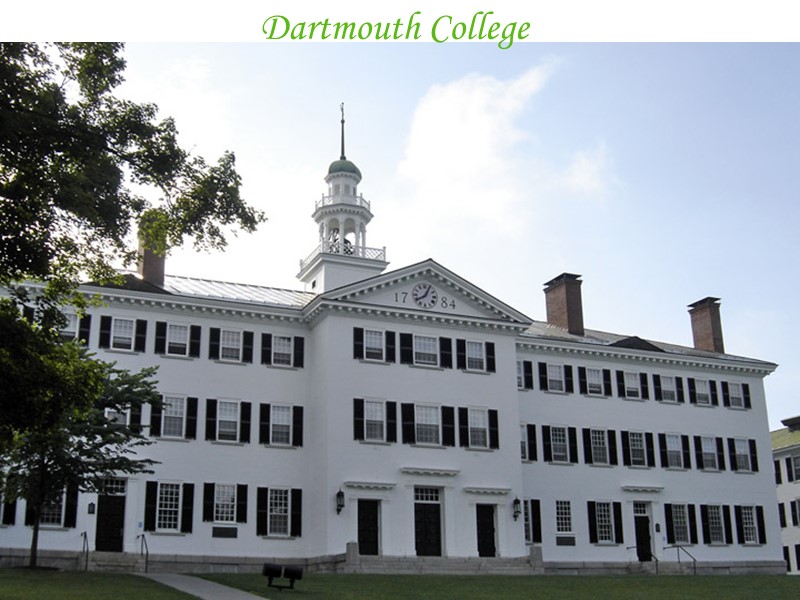
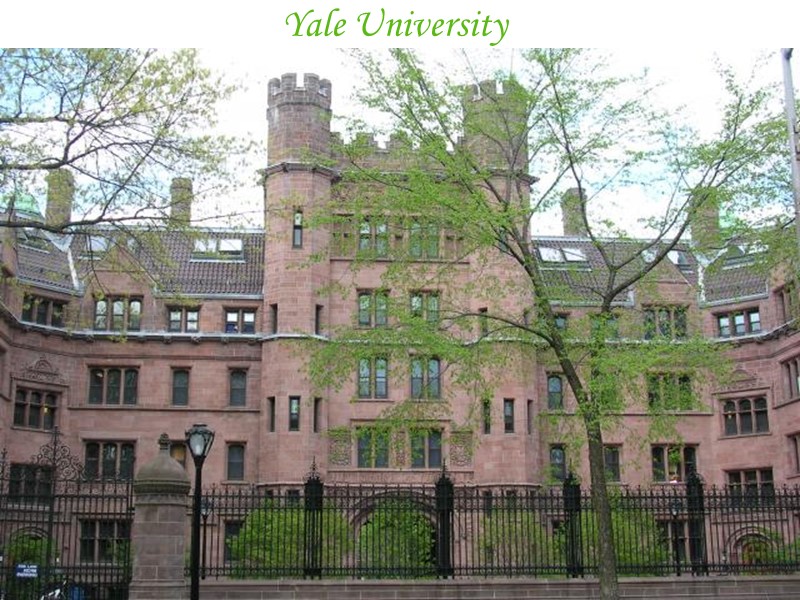
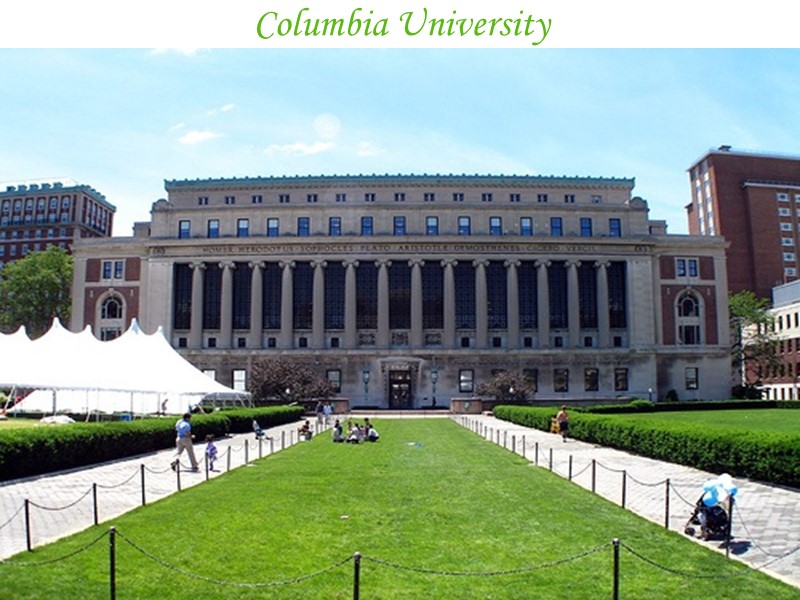
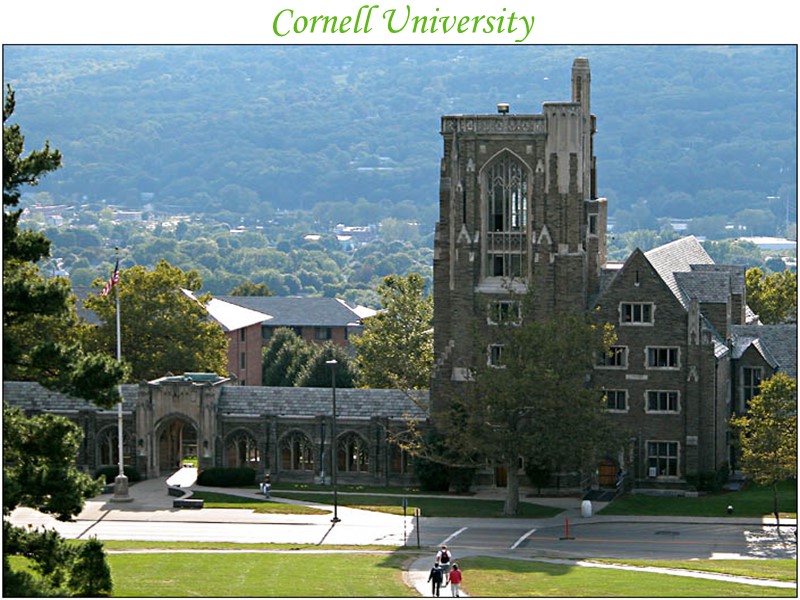
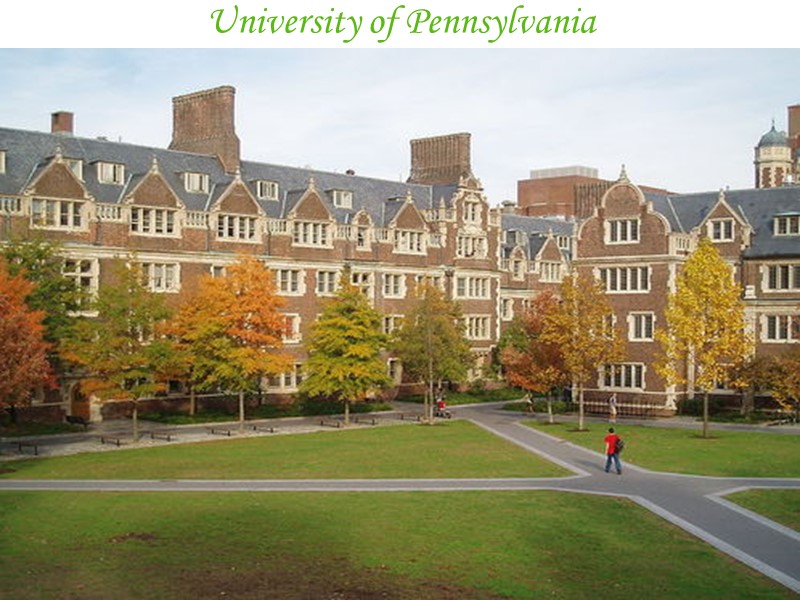
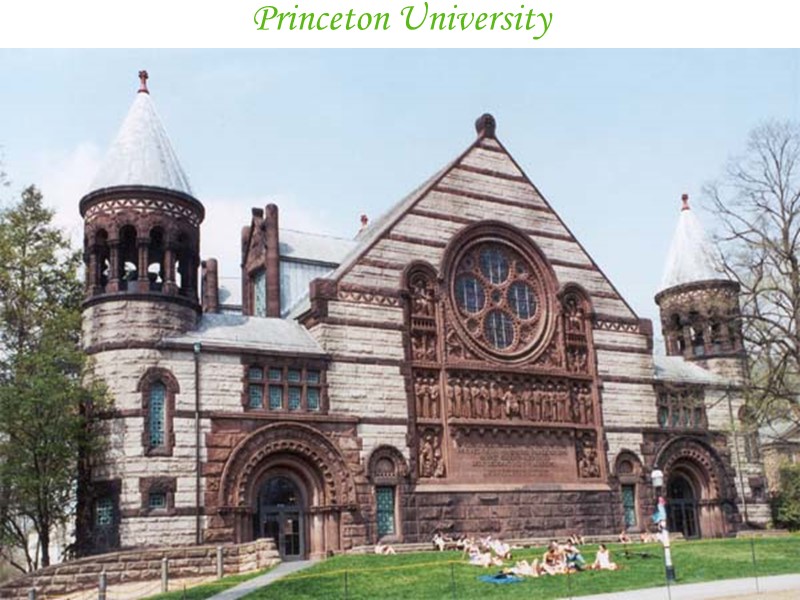
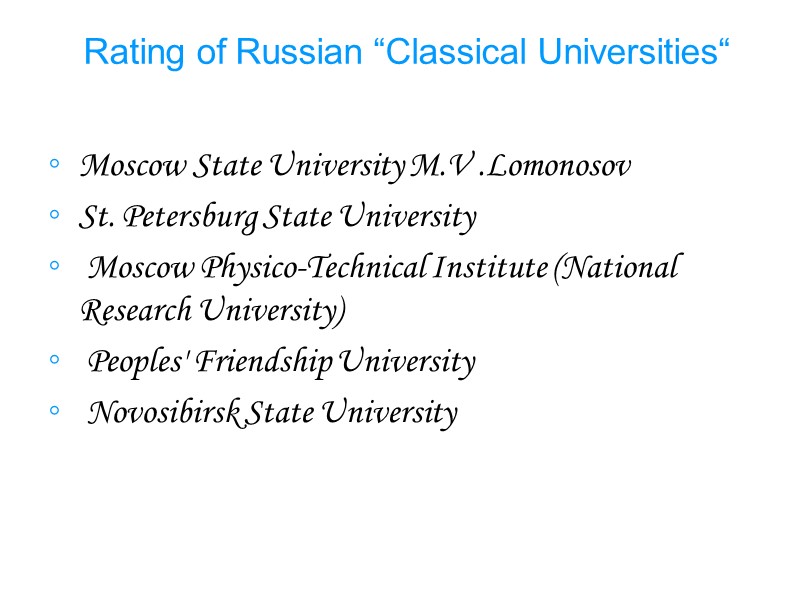
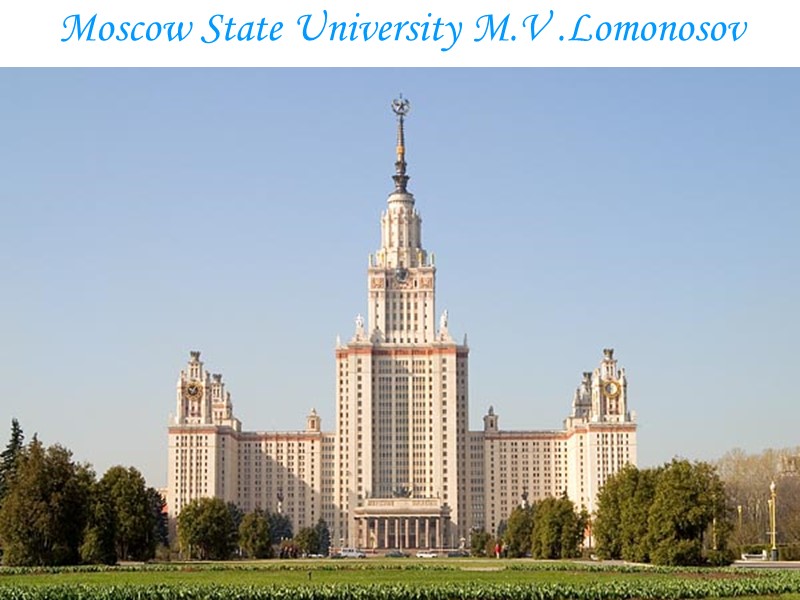

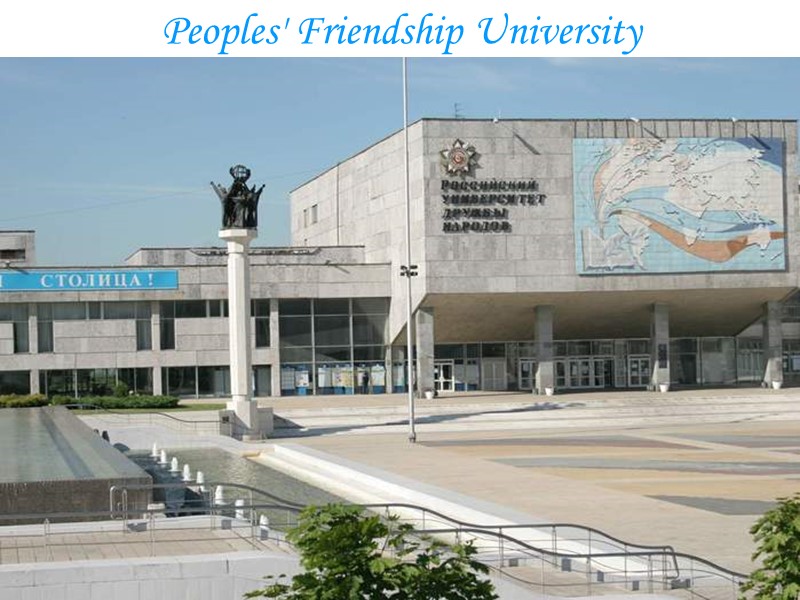
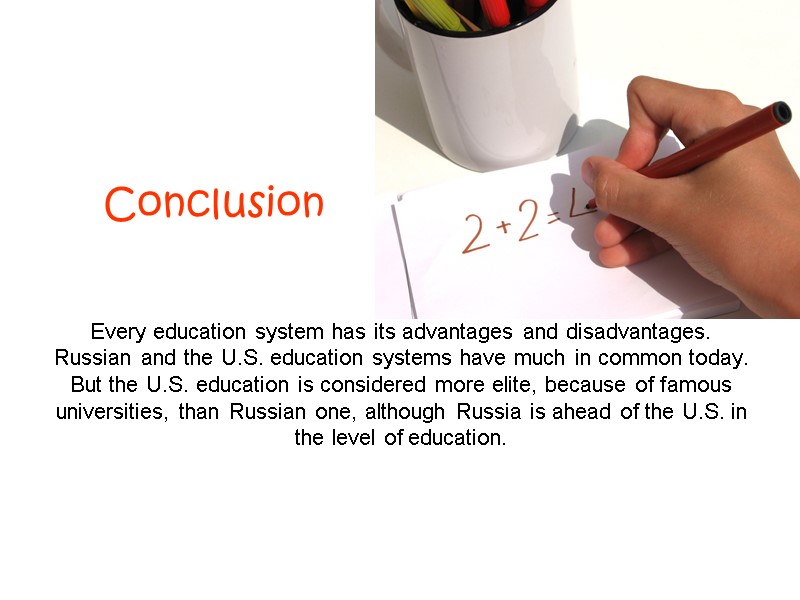

24780-diana_cher.ppt
- Количество слайдов: 31
 systems in Russia and the USA
systems in Russia and the USA
 Aims: Talk about the differences between systems. Find out the advantages and disadvantages of each system.
Aims: Talk about the differences between systems. Find out the advantages and disadvantages of each system.
 Content: Kindergartens Elementary school Junior school High school Universities Grading scale Uniform
Content: Kindergartens Elementary school Junior school High school Universities Grading scale Uniform
 “Education is what remains when we have forgotten all we have been taught.” Lord Halifax (1633-95) Education in its broadest sense is any act or experience that has a formative effect on the mind, character or physical ability of an individual. In its technical sense education is the process by which society deliberately transmits its accumulated knowledge, skills and values from one generation to another.
“Education is what remains when we have forgotten all we have been taught.” Lord Halifax (1633-95) Education in its broadest sense is any act or experience that has a formative effect on the mind, character or physical ability of an individual. In its technical sense education is the process by which society deliberately transmits its accumulated knowledge, skills and values from one generation to another.
 Education in the United States is mainly provided by the public sector, with control and funding coming from three levels: federal, state, and local. Child education is compulsory. 90% of schools are free state schools. Education system in Russia is federal and centralized. Education is compulsory for all children. Most of schools are state ones.
Education in the United States is mainly provided by the public sector, with control and funding coming from three levels: federal, state, and local. Child education is compulsory. 90% of schools are free state schools. Education system in Russia is federal and centralized. Education is compulsory for all children. Most of schools are state ones.
 Russia's kids can attend nursery school from 1 to 3 years, in rare cases - from 2 months to a year. Children attend kindergarten from three to seven years. Most kindergartens funded by the state, municipalities or agencies. At 5 years American children go to primary school, in the zero class. This zero-class is not mandatory. About 60% of young Americans visit it. Kindergartens exist separately in the U.S. and are called "pre-school“. Kindergarten
Russia's kids can attend nursery school from 1 to 3 years, in rare cases - from 2 months to a year. Children attend kindergarten from three to seven years. Most kindergartens funded by the state, municipalities or agencies. At 5 years American children go to primary school, in the zero class. This zero-class is not mandatory. About 60% of young Americans visit it. Kindergartens exist separately in the U.S. and are called "pre-school“. Kindergarten
 The education is from seven to seventeen. There are 11 “grades”; elementary school (1th – 4th grade); basic general education (5th – 9th grade); secondary (complete) general education (10th -11th grade). The education is from five to sixteen. There are twelve “grades”; elementary school (1th - 8th grade); high school (9th – 12th grade). Some states have ‘junior high’ schools (7th – 9th grade).
The education is from seven to seventeen. There are 11 “grades”; elementary school (1th – 4th grade); basic general education (5th – 9th grade); secondary (complete) general education (10th -11th grade). The education is from five to sixteen. There are twelve “grades”; elementary school (1th - 8th grade); high school (9th – 12th grade). Some states have ‘junior high’ schools (7th – 9th grade).
 Common: There are public and private schools; School day lasts for about 6 hours; Students are taught 180 days; Summer break period from June to August. Difference: In the U.S. academic year begins on the first Tuesday in September; September 1 - the traditional Day of Knowledge in Russia.
Common: There are public and private schools; School day lasts for about 6 hours; Students are taught 180 days; Summer break period from June to August. Difference: In the U.S. academic year begins on the first Tuesday in September; September 1 - the traditional Day of Knowledge in Russia.
 Elementary school One teacher teaches all subjects except physical education, fine arts and music; The class has one of its own room, where all classes are taught, except those that require special room or equipment; Minimum core set of knowledge and skills necessary for life and any work: reading, literate, elementary mathematics, writing. In addition to this general developmental classes are held: music, physical education, sometimes dancing, art and science.
Elementary school One teacher teaches all subjects except physical education, fine arts and music; The class has one of its own room, where all classes are taught, except those that require special room or equipment; Minimum core set of knowledge and skills necessary for life and any work: reading, literate, elementary mathematics, writing. In addition to this general developmental classes are held: music, physical education, sometimes dancing, art and science.
 Junior high Each course has a teacher - a specialist in this discipline, which is enshrined in his own cabinet, and the class during the school day goes from class to class; Each class has its own form-master; Separation of pupils into ordinary and advanced levels Student receives a certificate of general secondary education; All subjects are compulsory; At 16 students do exams called GCSE (General Certificate of Secondary Education); Students can choose options or ‘electives’;
Junior high Each course has a teacher - a specialist in this discipline, which is enshrined in his own cabinet, and the class during the school day goes from class to class; Each class has its own form-master; Separation of pupils into ordinary and advanced levels Student receives a certificate of general secondary education; All subjects are compulsory; At 16 students do exams called GCSE (General Certificate of Secondary Education); Students can choose options or ‘electives’;
 High school Students can choose their classes more freely than before, and only need to fulfill the minimum criteria for obtaining a diploma, which sets the school board. Typical minimum requirements are: natural sciences (the year of chemistry, biology and year of Physics), mathematics, literature, social sciences, usually includes the history and polity of the USA, and PE. Other subjects, students must choose for themselves. Students take ‘A’ or ‘A/S’ level exams in their specialized subjects as a part of the university entrance procedure.
High school Students can choose their classes more freely than before, and only need to fulfill the minimum criteria for obtaining a diploma, which sets the school board. Typical minimum requirements are: natural sciences (the year of chemistry, biology and year of Physics), mathematics, literature, social sciences, usually includes the history and polity of the USA, and PE. Other subjects, students must choose for themselves. Students take ‘A’ or ‘A/S’ level exams in their specialized subjects as a part of the university entrance procedure.
 The main purpose of a high school is a preparation for entrancing a college. The course includes further studing of subjects previously studied in junior school and a small number of new disciplines. Students pass the Unified State Examination in the end of studing at school. Students must pass Math and Russian. The other subjects student should choose himself, as a rule, these subjects are needed for admission to the chosen university. "School Certificate" is a document certifying the acquisition of knowledge in the amount of the state standard. High school
The main purpose of a high school is a preparation for entrancing a college. The course includes further studing of subjects previously studied in junior school and a small number of new disciplines. Students pass the Unified State Examination in the end of studing at school. Students must pass Math and Russian. The other subjects student should choose himself, as a rule, these subjects are needed for admission to the chosen university. "School Certificate" is a document certifying the acquisition of knowledge in the amount of the state standard. High school
 Grading scale
Grading scale
 Uniforms There is a school uniform in many private schools. In public schools, there is no single form, although some schools have introduced a dress code. There is no single school uniform but many high schools and grammar schools, especially the most prestigious, have their own form, emphasizing the students belonging to a particular institution.
Uniforms There is a school uniform in many private schools. In public schools, there is no single form, although some schools have introduced a dress code. There is no single school uniform but many high schools and grammar schools, especially the most prestigious, have their own form, emphasizing the students belonging to a particular institution.
 Universities Education consists of four years of studing at an institution of higher learning. There are 4,352 colleges, universities, and junior colleges in the country. The vast majority of students (up to 70%) lack the financial resources to pay tuition up front and must rely on student loans and scholarships from their university, the federal government, or a private lender. Depending upon the type of school and program, annual graduate program tuition can vary from $15,000 to as high as $50,000.
Universities Education consists of four years of studing at an institution of higher learning. There are 4,352 colleges, universities, and junior colleges in the country. The vast majority of students (up to 70%) lack the financial resources to pay tuition up front and must rely on student loans and scholarships from their university, the federal government, or a private lender. Depending upon the type of school and program, annual graduate program tuition can vary from $15,000 to as high as $50,000.
 Universities There are 562 (45,9%) State Universities of Russia. To obtain the qualification "bachelor" the student should study four years. For an excellent training students receive scholarships, but the amount is not large. There is a small number of budget places in the institutes
Universities There are 562 (45,9%) State Universities of Russia. To obtain the qualification "bachelor" the student should study four years. For an excellent training students receive scholarships, but the amount is not large. There is a small number of budget places in the institutes
 Brown University 1764 Harvard University 1636 Dartmouth College 1769 Yale University 1701 Columbia University 1754 Cornell University 1865 University of Pennsylvania 1751 Princeton University 1746
Brown University 1764 Harvard University 1636 Dartmouth College 1769 Yale University 1701 Columbia University 1754 Cornell University 1865 University of Pennsylvania 1751 Princeton University 1746
 Brown University
Brown University
 Harvard University
Harvard University
 Dartmouth College
Dartmouth College
 Yale University
Yale University
 Columbia University
Columbia University
 Cornell University
Cornell University
 University of Pennsylvania
University of Pennsylvania
 Princeton University
Princeton University
 Rating of Russian “Classical Universities“ Moscow State University M.V .Lomonosov St. Petersburg State University Moscow Physico-Technical Institute (National Research University) Peoples' Friendship University Novosibirsk State University
Rating of Russian “Classical Universities“ Moscow State University M.V .Lomonosov St. Petersburg State University Moscow Physico-Technical Institute (National Research University) Peoples' Friendship University Novosibirsk State University
 Moscow State University M.V .Lomonosov
Moscow State University M.V .Lomonosov
 St. Petersburg State University
St. Petersburg State University
 Peoples' Friendship University
Peoples' Friendship University
 Conclusion Every education system has its advantages and disadvantages. Russian and the U.S. education systems have much in common today. But the U.S. education is considered more elite, because of famous universities, than Russian one, although Russia is ahead of the U.S. in the level of education.
Conclusion Every education system has its advantages and disadvantages. Russian and the U.S. education systems have much in common today. But the U.S. education is considered more elite, because of famous universities, than Russian one, although Russia is ahead of the U.S. in the level of education.
 The project was maid by Diana Chernyadeva, Roman Ifutin and Ilya Lukashin.
The project was maid by Diana Chernyadeva, Roman Ifutin and Ilya Lukashin.

